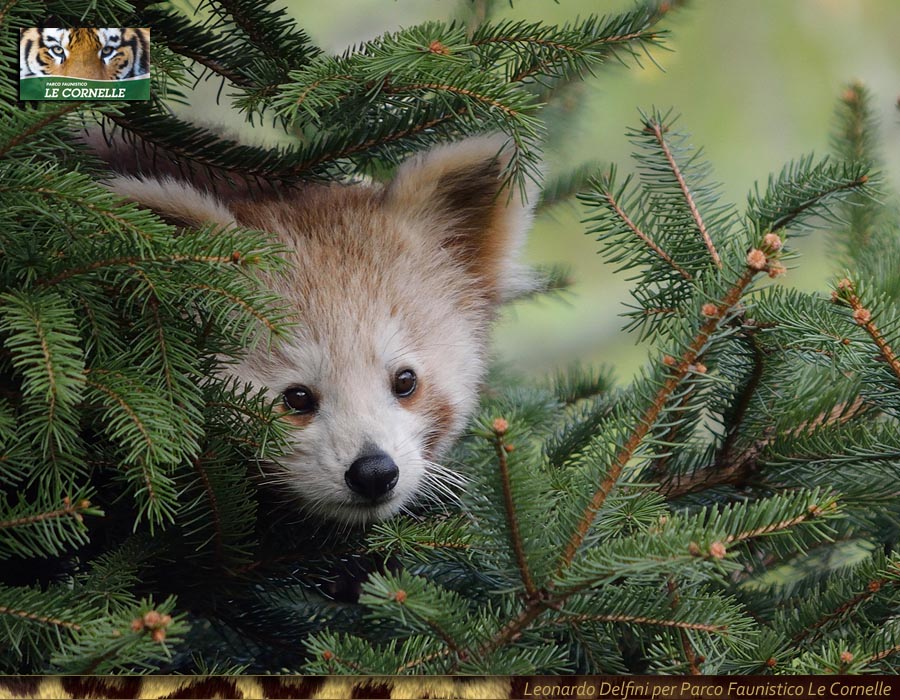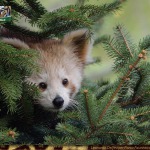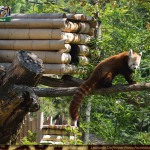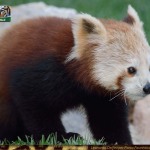-
Nome:
RED PANDANome scientifico:
Ailurus fulgensClasse:
MammiferiOrdine:
CarnivoriFamiglia:
AiluridiProvenienza:
AsiaAlimentazione:
bambù – vegetali – frutta-uova -insettiHabitat:
foreste di bambù, aree montuose, sottoboschiRiproduzione:
131 giorni, 1-5 cuccioli per parto -
The area of distribution of the red panda is irregular and covers the areas of Nepal, India, Burma and China. It occupies bamboo forests placed at a heights between 1.500 and 4.800 meters, at a temperature of 10°-35° temperature. It can adapt to different types of forests, but it prefers mountainous areas with both conifer or deciduous forests and bamboo undergrowths. Its length, tail excluded is 50-65 cm, while the tail is about 30-50 cm. The weight varies between 3 and 6 kilos. More dynamic day-time than night-time, it lives solitary or in couple at the most, and it spends the majority of its time on the trees eating bamboo leaves, roots, berries, fruit and, if necessary, eggs, insects, small mammals and birds.
When eating, it grabs food with its forepaws and takes it towards its mouth, where it chews for a long time before swallowing. Since it evolved as a carnivorous animal, the digestive system is not suitable to a vegetarian nutrition lacking in proteins. For this reason, it has to ingest big quantity of plants to survive. It is equipped with strong claws, bowed and semi-retractable, which allow it to grab branches, leaves and fruit. In addition, the rear paws are endowed with a faux-thumb, that it actually is an extension of the carpus bone, used in order to pick up plants. The hair covered palm and the semi-retractable claws make the red panda an excellent climber.
Extremely heat sensitive, it seeks for shelter from sunlight among the branches and tree holes. The red panda loves sleeping on the higher branches, where it crouches protecting its head from cold with its long and thick tail, or it lays on a log with dangling paws. The red panda uses its tail as a balance wheel during its movements. Its principal predator is the snow leopard. The red panda and the giant black and white panda (Ailuropoda melanoleuca) are distant relatives despite they share their name. they both live in mountain rainforests and eat mainly bamboo. The IUCN categorizes the red panda as an endangered species. The main threat comes from the humans who destroy the forests in order to make space for grazing lands and cultivable fields. We can estimate 10.000 survivors examples.














